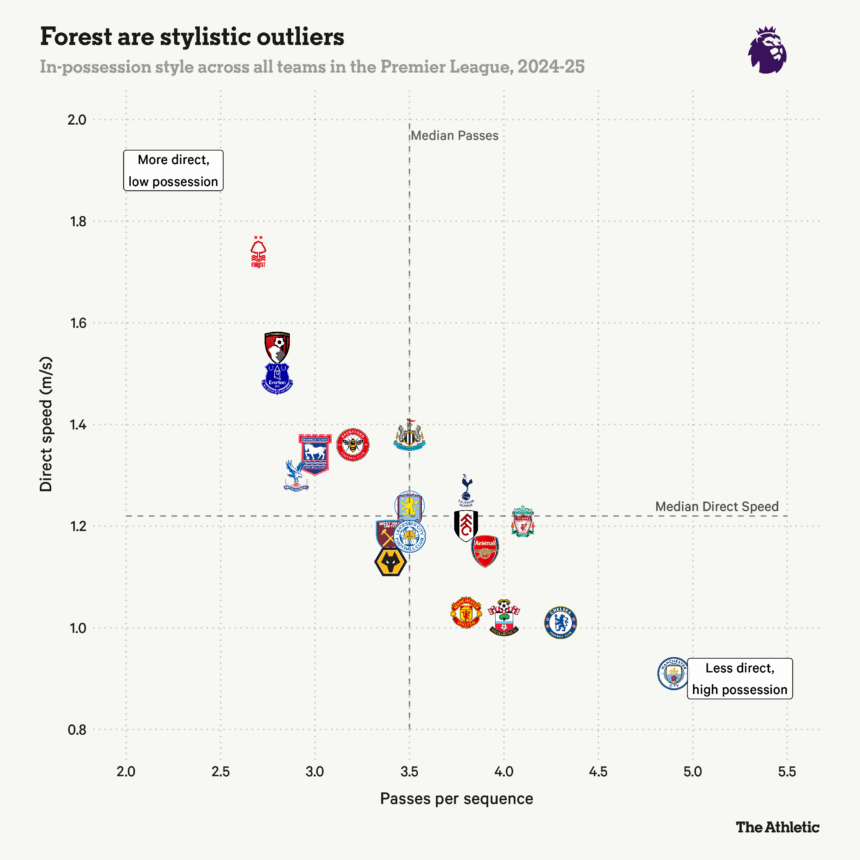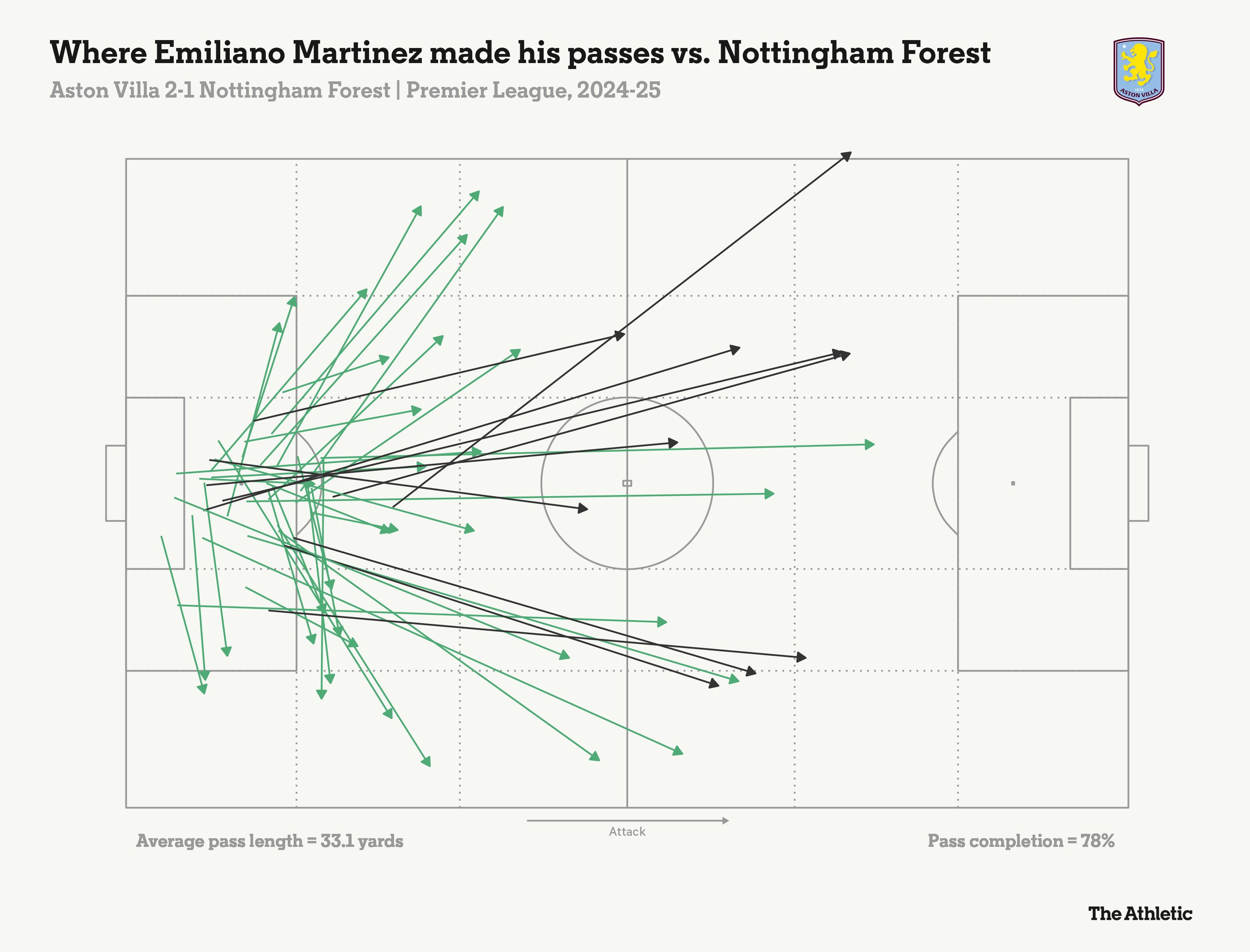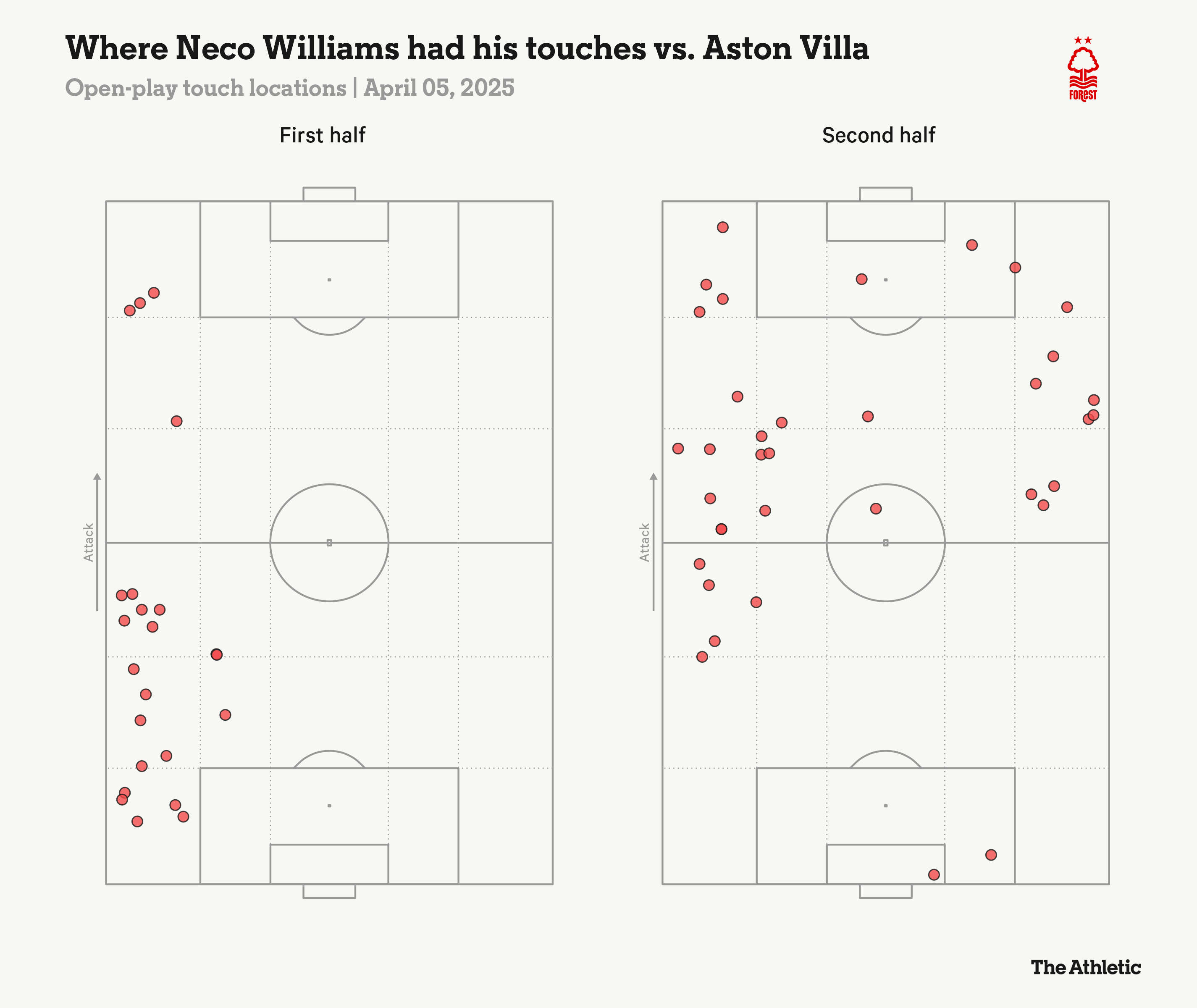It takes conscious hypercriticism to find fault with Nottingham Forest this season. Nuno Espirito Santo’s side are on track for their best top-flight finish for three decades (since coming third, in 1994-95), just three years after being promoted from the Championship.
The question is no longer if they will be playing European football next season. Rather, it has become a case of which tournament?
Advertisement
Nuno has achieved all that after inheriting a squad that was fighting relegation when he took over in December 2023, and had needed serious investment the previous summer because Forest went up so unexpectedly.
In many ways, they are a throwback. A 2010s-looking Premier League team, built on a defence-first style and a big No 9 in Chris Wood, who scores tap-ins from a supply line fed by fast wingers and a creative No 10.
In being tactically flexible and direct, and not obsessive over high pressing and possession, all of which go against the current Premier League grain, Forest have found success.
For that to continue — not that anyone thinks the expectation is for Forest to always finish at least third and in the FA Cup semi-finals from now on — they will need to add a favourite buzzword of Brentford head coach Thomas Frank: “layers”.
Defeat away to Aston Villa was their eighth league loss of the season. The only teams with fewer are Liverpool (one) and Arsenal (three), the two sides above Forest. However, six of those defeats have come from the eight matches where Forest have conceded first (their only win from behind this term was the reverse fixture against Villa).
Forest’s blueprint of scoring early and scoring first has been rinsed and repeated this term — no team have broken the deadlock more than Nuno’s side (23 times), and they have gone on to win 16, draw five and lose only two of those. They showed against Manchester United last midweek, their seventh 1-0 win of the season, just how good they are at seeing out marginal wins.
However, recovering from behind has not been a strength, and it means that 23 of Forest’s 30 league games in 2024-25 have been won by whichever team scores first.
So when Villa struck twice in the first 15 minutes on Saturday evening, it raised the same question that Forest had few answers to when they conceded goals in flurries away to Bournemouth (in January) and Newcastle United (in February): How many “layers” have you got?
Advertisement
Bournemouth head coach Andoni Iraola made the point that “scoring first is key” against Forest after his team beat them 5-0. “In most of their last games, they’ve been winning from the first half, and then it becomes the game they want,” he added.
From kick-off, Villa was not the exact game Nuno wanted, as injuries to first-choice striker Wood, back-up No 9 Taiwo Awoniyi, and right-back Ola Aina meant a shift from his preferred 4-2-3-1 formation to the 3-4-1-2 set-up that Forest have often seen matches out in.
They committed few bodies to the high press early on, keeping a back five on the halfway line. Nominal wingers Callum Hudson-Odoi and Anthony Elanga were playing split-striker roles and continuously found themselves chasing passes between claret and blue shirts.
No 10 Morgan Gibbs-White was one-v-two against the Villa double pivot, while goalkeeper Emiliano Martinez found easy out balls with wedged passes to either full-back.
Villa’s opener came with Forest in a settled mid-block shape but no pressure on the ball. This meant that when Youri Tielemans clipped a pass in behind for Morgan Rogers, and right centre-back Morato switched off, the England international was clear to run through and score, firing through Matz Sels’ legs.
It was the first of five big chances Villa created, the most Forest have faced in any match all season. The second of those was goal number two, another type of move that a back five is set up to defend against.
Ryan Yates twisted and turned trying to defend the advancing left-back Ian Maatsen one-v-one, who got beyond him on the edge of the box and fizzed a low cross for right winger Donyell Malen — he was in Neco Williams’ blind spot and tapped in from three yards out.
It put Forest in the kind of situation they have been on the opposite end of in most matches this season: they had to come out, take risks, and play. Elanga and Hudson-Odoi both had counter-attack chances in the first half at 2-0, firing wide after they dribbled their way into shooting positions.
Clearly, Nuno felt the attack was too individualistic, and introduced Jota Silva for Elanga at half-time for more of a penalty-box presence. The 25-year-old halved the deficit just before the hour, though the most interesting change was to Forest’s press.
They went man-for-man, pushing the wing-backs forward onto Villa’s full-backs (thus cutting that release valve for Martinez) and committing an extra midfielder to match up with Villa’s pivots. It had plenty of risk, twice leading to one-v-ones when Rogers and, in second-half stoppage time, substitute Marcus Rashford were put through by long balls. Sels saved both chances.
Advertisement
Game state considered, it was a worthwhile risk. Only one in 10 Villa passes in the first half were hit long, at a 70 per cent completion rate. After half-time, it was one of every five passes but only 30 per cent found a team-mate. Forest won more duels and second balls and were able to pin Villa back, sustaining attacks and possessions upfield.
This improved their wide attacks, particularly because Williams could finally get forward on the overlap to support Hudson-Odoi, with the duo providing plenty of dangerous crosses and Forest finally getting three or four team-mates in the penalty area.
From one such delivery, Gibbs-White headed over and an argument with Jota Silva started, because the Portuguese was in a better position at the back post. The England international had not, however, heard his call — a situation that would never have transpired in the first half.
This is conscious hypercriticism. Villa are now 15 home matches unbeaten and Forest have lost marginally to a Champions League quarter-finalist. It is also a reminder that their style, on its own, will bring riches this season but does not have longevity or a high ceiling.
Forest will in future — likely in Europe themselves next season — need to show extra “layers” to their game. The second half against Villa was proof they have them.
(Top photo: Forest during their loss to Villa; by Dan Istitene via Getty Images)












